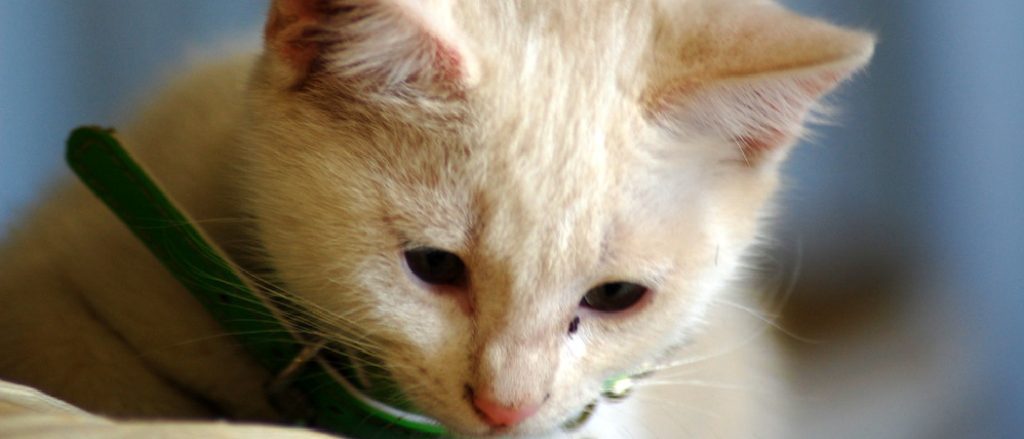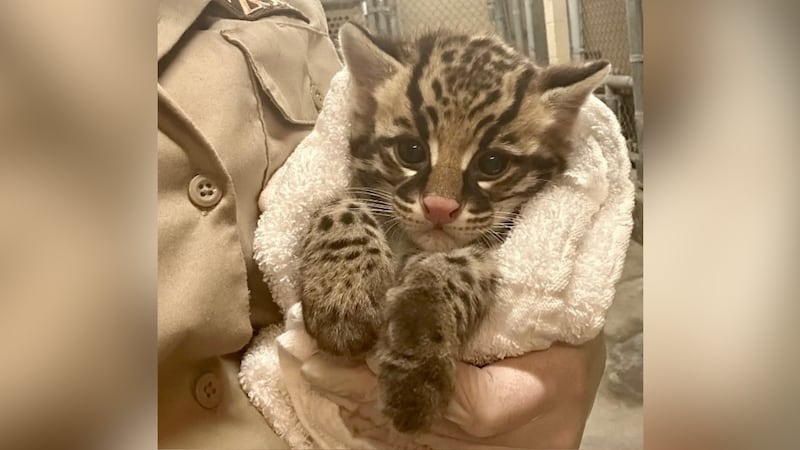Cats lose whiskers as a natural process and for various reasons, such as stress or injury. Whiskers serve as essential sensory organs for cats.

Not only do they help cats navigate their surroundings by gauging distances and detecting potential obstacles, but they also serve as an expression of their emotions. However, you may have noticed your feline friend occasionally shedding these long and wiry hairs.
This is a normal occurrence as cats frequently lose their whiskers as part of a natural shedding process. Additionally, whisker loss can be triggered by stress, injuries, or even just regular wear and tear. Understanding why cats lose whiskers can help you better care for your furry companion and ensure their overall well-being.

Credit: www.amazon.com
Understanding Whiskers
Whiskers are one of the most fascinating and distinctive features of cats. Those long, flexible hairs that sprout from their cheeks may seem like just another curious aspect of feline anatomy, but they actually serve a vital purpose in a cat’s daily life. In this article, we’ll dive into the world of whiskers, exploring what they are, their purpose, and the fascinating anatomy behind them.
What Are Whiskers?
Whiskers, also known as vibrissae, are specialized hairs that are significantly thicker and stiffer than the rest of a cat’s fur. They are rooted deeper in the skin, embedded in specialized follicles that are packed with nerve endings, making them highly sensitive. Whiskers aren’t exclusive to the cheeks but can also be found on the chin, above the eyes, and even on the back of the front legs.
The Purpose Of Whiskers
Whiskers serve as an essential sensory tool for cats, providing them with invaluable information about their surroundings. Although cats have excellent vision, their whiskers act as an additional sensory system, enabling them to navigate their environment with remarkable precision.
One of the main purposes of whiskers is to help cats gauge the width of openings and determine if they can fit through them. The length of a cat’s whiskers is generally similar to the width of its body, enabling it to determine whether a gap or opening is wide enough to squeeze through without getting stuck.
Whiskers also aid cats in detecting changes in air currents and temperature. Their sensitivity to slight air movements helps cats in tracking prey, as well as alerting them to any potential threats in their vicinity. Additionally, whiskers play a crucial role in a cat’s balance, as they provide feedback on changes in their body position and posture.
Whisker Anatomy
Now that we understand what whiskers are and their purpose, let’s delve into the anatomy of these remarkable sensory hairs. Whiskers are made up of keratin, the same protein found in human hair and nails. However, what sets whiskers apart is their unique structure and positioning.
The root of each whisker is nestled in a hair follicle, where it is surrounded by an extensive network of nerve endings that make them incredibly sensitive. These nerve endings send signals to the cat’s brain, providing them with valuable feedback about their immediate surroundings.
The whisker itself is encased within a specialized sheath called the follicle, which protects it from damage. Unlike regular hair, whiskers are deeply rooted in the second layer of a cat’s skin, known as the dermis, anchoring them firmly in place.
At the base of a whisker, you’ll find a tiny muscle called the whisker pad. This pad allows the cat to move its whiskers independently, providing even greater precision and flexibility in their sensory exploration.
When a cat loses a whisker, a new one will usually grow in its place. Whiskers naturally shed and regrow throughout a cat’s life, but they should never be cut or trimmed intentionally. Whiskers are not just a fashion statement for cats; they are an essential tool for their survival and well-being.
In conclusion, whiskers are not just ordinary hairs on a cat’s face. They play a crucial role in a cat’s life, providing them with valuable sensory input, aiding in navigation, balance, and even hunting. Understanding the importance of these remarkable hairs deepens our appreciation for the fascinating world of cats.

Credit: www.amazon.com
Why Do Cats Shed Whiskers?
Cats are known for their mysterious and elegant appearance, and one of the features that adds to their charm is their whiskers. Whiskers, formally known as vibrissae, are long, thick hairs located on the sides of a cat’s muzzle. They serve as sensory organs and play a crucial role in a cat’s daily life. But have you ever wondered why cats shed their whiskers? If you went to know more about why do cats lose whiskers: the surprising truth revealed, keep reading https://petsical.com/cat-losing-whiskers-on-one-side-2/ !
Natural Process Of Whisker Growth And Loss
The growth and loss of whiskers in cats is a perfectly natural process. Just like the hair on their body, whiskers go through a continuous cycle of growth and shedding. A cat’s whiskers are not like regular hairs, they are deeply rooted and have a rich blood supply. This allows them to grow back once they fall out.
Whiskers typically grow to a specific length and then fall out naturally. As they grow, they are replaced by new whiskers, ensuring that a cat always has functional and well-tuned sensory organs. This shedding and regrowth process helps cats maintain their sensory capabilities at their optimum level.
Factors That May Cause Excessive Whisker Shedding
In most cases, whisker shedding is a natural and normal phenomenon. However, there are some factors that can lead to excessive whisker shedding in cats. These factors may include:
- Poor nutrition: A diet lacking essential nutrients can weaken the hair follicles, including those responsible for whisker growth.
- Stress and anxiety: Cats are sensitive creatures, and stress or anxiety can have an impact on their overall health, including the condition of their whiskers.
- Illness or medical conditions: Certain medical conditions, such as feline acne or dermatitis, can cause abnormal whisker shedding in cats.
It is important to note that if you suspect excessive whisker shedding in your cat, it is best to consult with a veterinarian. They can help identify the underlying cause and provide appropriate treatment if needed.
When To Be Concerned About Whisker Loss
While whisker shedding is a natural process, there are certain situations where it may be a cause for concern. If you notice sudden and significant whisker loss in your cat, without any apparent regrowth, it could indicate an underlying health issue that requires attention.
Additionally, if your cat’s whiskers are breaking or becoming uneven, it may be a sign of poor whisker health. In such cases, it is advisable to seek veterinary advice to ensure the well-being of your furry friend.
In conclusion, whisker shedding is a normal part of a cat’s life. Understanding the natural process of whisker growth and loss, as well as recognizing factors that may contribute to excessive shedding, can help you better care for your feline companion. By keeping an eye on your cat’s whisker health and seeking veterinary assistance when necessary, you can ensure their sensory organs remain intact and functional.
Caring For A Cat’s Whiskers
Whiskers may seem like just another feature of a cat’s face, but they serve a vital purpose in their overall well-being. Caring for a cat’s whiskers should be an essential part of their grooming routine and overall health care. In this section, we will explore two key aspects of whisker care: gentle handling and avoiding whisker stress, as well as maintaining whisker health and appearance. Additionally, we will emphasize the importance of regular vet checkups to ensure your feline friend’s whiskers are in prime condition.
Gentle Handling And Avoiding Whisker Stress
Whiskers are not just ordinary hairs. They are highly sensitive and act as sensory receptors for a cat. As responsible cat owners, it is crucial to handle your feline companion’s whiskers gently to avoid causing any unnecessary stress or discomfort. Here are some practical tips to keep in mind:
- Avoid pulling or tugging on the whiskers, as it can be painful and may lead to whisker stress.
- When petting your cat, be mindful of their whiskers and avoid putting excessive pressure on them.
- Provide your cat with enough space and freedom to move around without brushing against narrow spaces, which can put strain on their whiskers.
Remember that whisker stress can disrupt a cat’s sense of balance and coordination, leading to anxiety and discomfort. By practicing gentle handling, you are ensuring a stress-free environment for your furry friend.
Maintaining Whisker Health And Appearance
Just like the rest of your cat’s grooming routine, it is important to pay attention to their whiskers as well. Maintaining whisker health and appearance can be easily incorporated into your regular grooming regime. Here are some key guidelines to follow:
- Regularly inspect your cat’s whiskers for any signs of damage or breakage. If you notice any abnormalities, consult with a veterinarian.
- Ensure your cat has a well-balanced diet that provides all the necessary nutrients to promote healthy hair growth, including their whiskers.
- Use a soft-bristled brush specifically designed for cats to gently comb through their whiskers, removing any dirt or debris that may have accumulated.
- Consider using a specialized whisker balm or moisturizer to keep your cat’s whiskers nourished and prevent dryness.
By incorporating these simple steps into your cat’s grooming routine, you can maintain their whiskers’ health and appearance, ensuring they remain strong and vibrant.
The Importance Of Regular Vet Checkups
While you play an integral role in caring for your cat’s whiskers, it is crucial to understand that regular vet checkups are equally vital. A qualified veterinarian can assess the overall health of your feline companion, including their whiskers. Regular checkups can help identify any underlying issues, such as infections or abnormalities, that might affect the health of your cat’s whiskers and overall well-being.
During these visits, the vet can provide tailored advice on whisker care, recommend suitable products for grooming, and address any concerns you might have. Remember, your veterinarian is your trusted partner in ensuring your cat’s whiskers stay in optimal condition.

Credit: www.wfsb.com
Frequently Asked Questions Of Why Do Cats Lose Whiskers
Is It Normal For A Cat To Lose A Whisker?
Yes, it is normal for cats to lose a whisker. Whiskers can fall out due to natural shedding or daily activities, but they will grow back. Cats rely on whiskers for sensory purposes and balance, so losing one is not a cause for concern.
Do Cat Whiskers Grow Back?
Yes, cat whiskers can grow back if they are cut or fall out.
What Would Happen If You Cut A Cat’s Whiskers Off?
Cutting a cat’s whiskers can cause distress and disrupt their sense of balance and navigation. Whiskers provide vital information about their surroundings, so removing them can lead to disorientation and confusion for the cat. Thus, it is best to avoid cutting a cat’s whiskers.
What Causes Cats Whiskers To Break Off?
Cats’ whiskers can break off due to accidents, excessive grooming, or even normal wear and tear.
Conclusion
Cats losing whiskers may seem alarming, but it’s a natural phenomenon. Whiskers play a crucial role in a cat’s sensory communication and navigating their surroundings. Shedding and breakage are normal processes in a cat’s whisker growth cycle. As responsible cat owners, understanding why cats lose whiskers helps us provide optimal care.
So, embrace the whimsical nature of your cat’s whiskers and appreciate their uniqueness.


